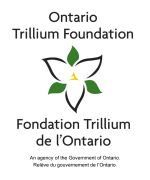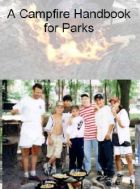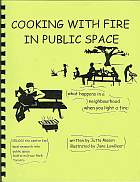

Pages in this Folder:

Related Folders:
See also Department Site Map
Support Provided by

Toronto Parks and Trees Foundation

This website has received support from celos.ca through the Trillium foundation.
Publications
Comments?
For the basics, see
- Website & Privacy Policies
- How To Get Involved
- The Role of the Park
Search options:
Department Site Map
Custodians:
 Park Money
Park Money
At this point, the funds raised at Dufferin Grove Park are handled by CELOS:
CELOS is in discussion with City staff to work out a more direct way of cash-handling, since the experiment of raising park funds through food is part of CELOS' mandate, but the continuation (and replication of this kind of fund-raising at other locations) is up to the City.
posted April 8, 2006
Counterfeit twenties
In the last six weeks of the rink season, the rink snack bar took in almost $200 of counterfeit twenties. It took a long time to notice that this was a pattern and not just bad luck. The farmers at the market didnít get any bad bills, and the CIBC bank manager at Dufferin and Bloor said they hadnít noticed an unusual number of bad twenties there. That led to the conclusion that one or several of the Dufferin Rink rats have diversified into a new line of business, and that the rink snack bar was an easy mark, because no one examined the money until after it got deposited in the bank account.
But now the Bank of Canada is sending the park a lot of coloured pictures of bank note security features. The rink season is over, but the bakers and everyone else will be looking for fakes during the market and when the playground outdoor snack bar starts up. (Itís actually pretty easy, once youíre suspicious.) Itís our hunch that there wonít be counterfeit twenties again until next winter. With a little help from the RCMP, maybe never.
posted April 8, 2006
Where your cookie money went:
During the winter, a lot of the snack bar and park bread money went to buy more food supplies, of course, but what was left over went into paying for extra youth workers, web site maintenance, and some special projects. For example: $250 went to rent a bus so the Jimmie Simpson Rink "Hockey in the Neighbourhood" program could bring all their kids over for a shinny hockey tournament. $40 went to rent sound equipment from Long and McQuade, so that park staff (and DJ) Ted Carlisle could spin his disks at the first-ever rink DJ night on the last Friday in February. (That was so much fun that Ted and park staff/ dancer Eroca Nicols are planning a few summertime DJ and line-dancing evenings in the park for the summer.) $300 went to MacGregor Park to help them buy paints and ink for Kristen Fahrigís Tibetan-flag-making project this spring. More details are posted on the "about us" page of the park web site.
posted April 8, 2006
Snack bar food prices for the playground:
When the water gets turned on again at the outdoor kitchen and the food cart returns to the playground, the same pricing rules apply as in the wintertime at the rinkís zamboni snack bar. The price list reflects how much money is needed to pay for the materials that went into the food, plus a bit extra for other park uses. But if your grocery money is tight, and you and your kids are hungry because of all that fresh air, even the cheap snack bar food prices may add up too fast. If youíre hungry, but you canít pay as much for the snack bar food, pay less. Park staff also like to do trades Ė if you can do something for the park (help pick up litter at the playground, water the gardens, wash dishes, sort tools in the tool cupboard, break up wooden skids for the bread ovens) the park staff will tell you your money wonít work at the snack bar, and you eat for free. That goes for kids too. On the other hand, if you find the food very cheap and good, and think it should cost more, go ahead and pay more. Every penny goes to the park.
But nobody has to pay a set amount for the food, nor does anyone have to show proof that they canít pay. The snack bar money is a collective gift to the park from park users, a pooling of resources that can then be used to make the park even nicer. For details on how that pool of money has been used, go to the park web site (www.dufferinpark.ca) and click on ďabout us.Ē To give more suggestions for good ways to use the food money, talk to any of the park staff. Good ideas are also gifts that shape the park.
posted April 8, 2006
The park staffing budget and cost recovery by the City of Toronto:
For some years now, friends of the park have been asking the Cityís Parks and Recreation Division to recognize Dufferin Grove Park as a kind of neighborhood laboratory of public space, a community centre without walls. Noting that most of the Cityís community centres with walls cost upwards of $600,000 a year to run, and that this park has become at least as busy, we asked for a staffing budget of $164,000, for Dufferin Grove. This request was never taken seriously. But in 2005, the local recreation supervisor, Tino DeCastro, was willing to try an experiment. He had enough money from user fees (from programs at Mary McCormick Community Centre and Wallace-Emerson Community Centre), that he could assign almost as much as we asked, for staff working at Dufferin Grove Park. (His total area budget was about $1.6 million, and user fees for those centres brought in another $1.1 million Ė in this area there are the two community centres, and Dufferin Grove is the main park).
Dufferin Grove Park worked much better as a result of the improved staffing. But the Parks and Recreation management was not pleased, and in February Recreation Director Don Boyle said the park would have to return to a recreation budget of only $65,600 a year.
posted April 8, 2006
What do our taxes pay for?
Numerous difficult discussions with management since then have circled around the idea of "cost recovery." Dufferin Grove Park is a problem, because it does not charge user fees for most of what goes on there. The costs of paying staff Ė to make the park work well Ė are thus un-recovered, and counted as a loss.
This is a puzzle. After all, people do pay taxes to run the parks. $141 million of our taxes will go to the Parks and Recreation Division to look after public space in 2006. User fees bring in many millions more.
If the goal is total "cost recovery" for parks and recreation staffing costs, what are the $141 million in taxes for?
posted February 10, 2006
Where the "cookie money" went in 2005:
This is the money that park users gave for park food, and that was then in turn used to fund the following things outside of the city budget:
- Materials and supplies: $19,972 (This ranges from first aid supplies, paint and game pieces, to appliance repair and kitchen cupboards and fridge for the zamboni kitchen renovations. It also includes some items that are re-sold, such as swim diapers and hockey pucks.)
- contracts for extra workers to try new things in the park: $22,526.06
- contracts for researching broader park and public space issues: $14,508.55
- park web site management: $10,946.49
- groceries: $57,567.30
- building the cob courtyard: $4,984.50






 Printer friendly version
Printer friendly version